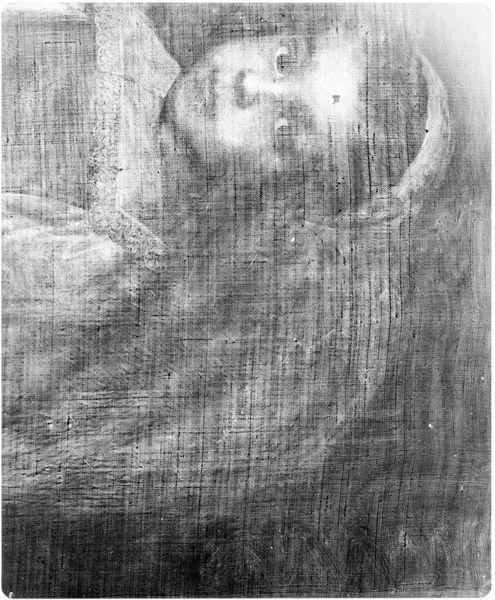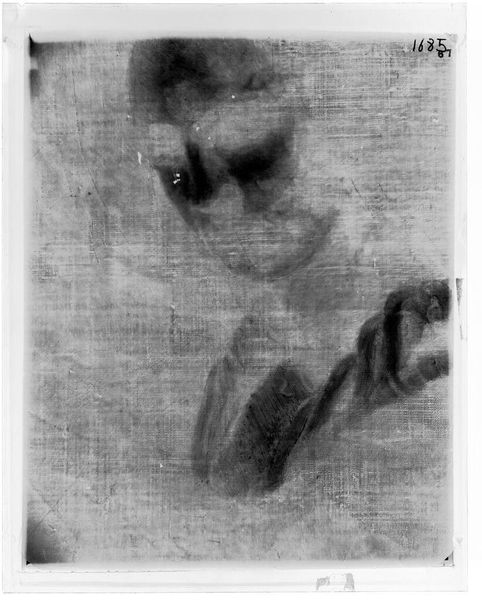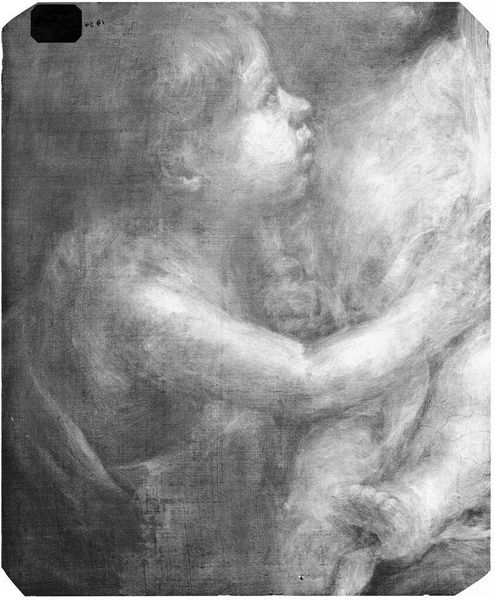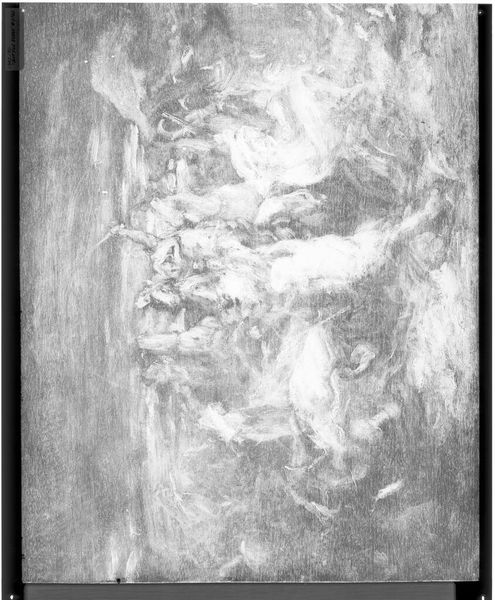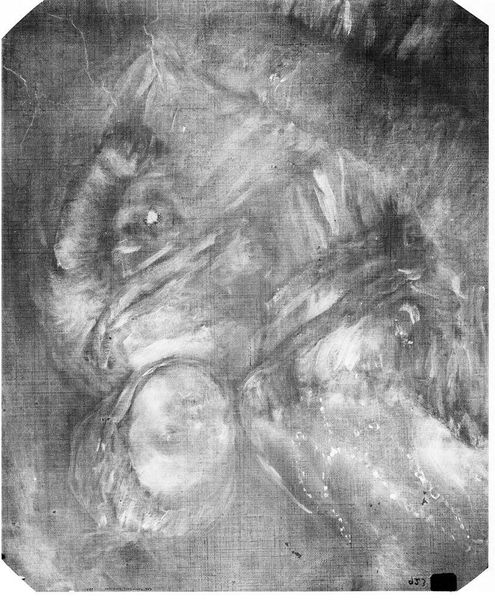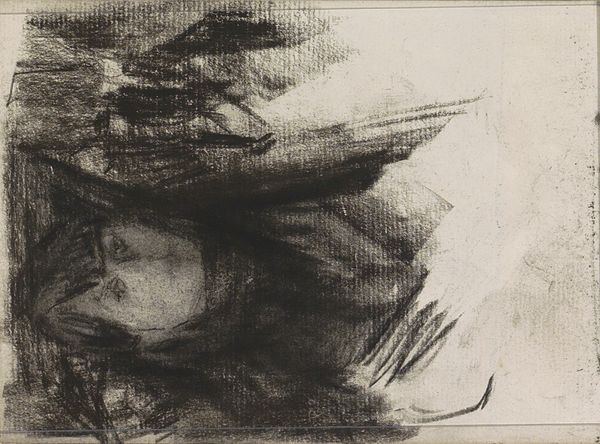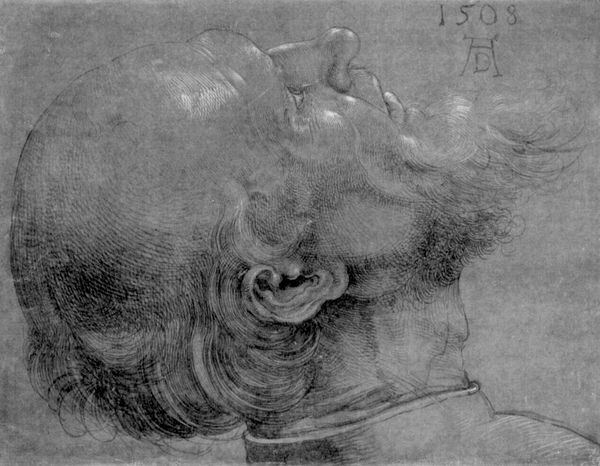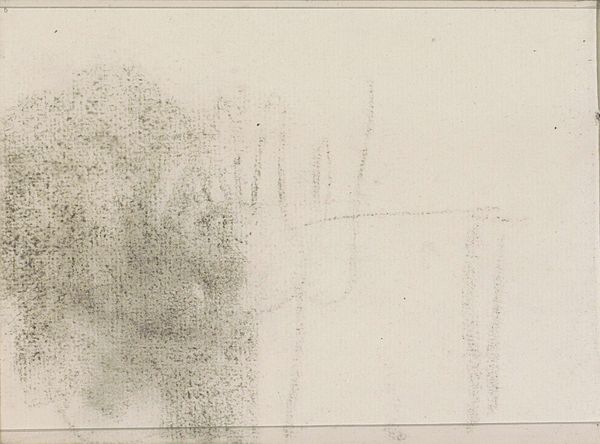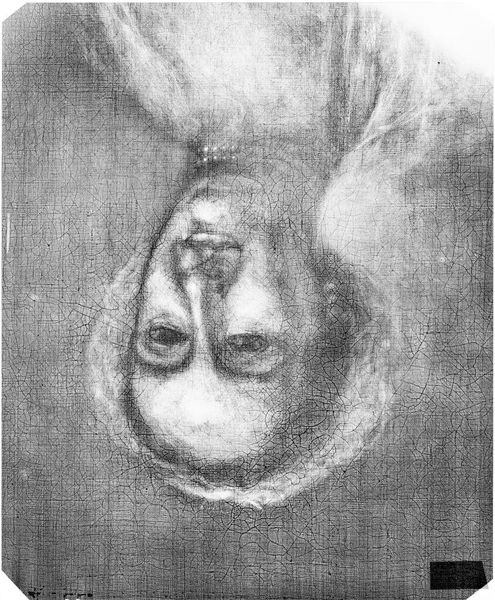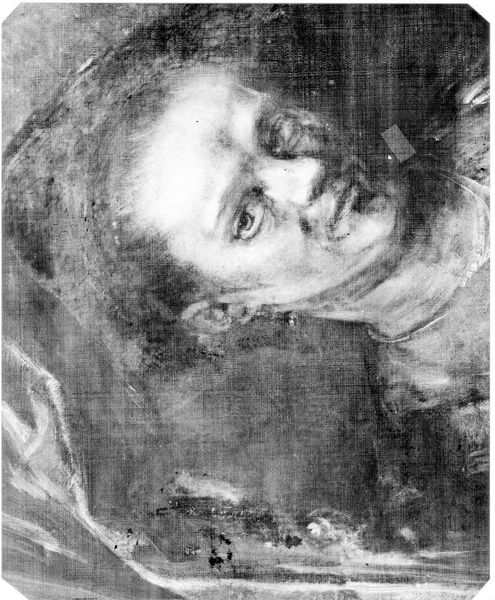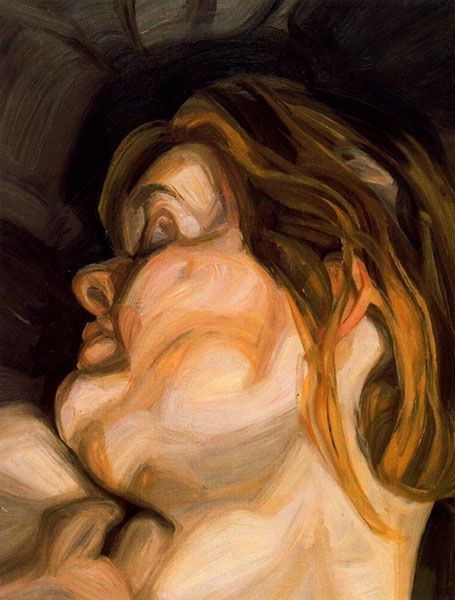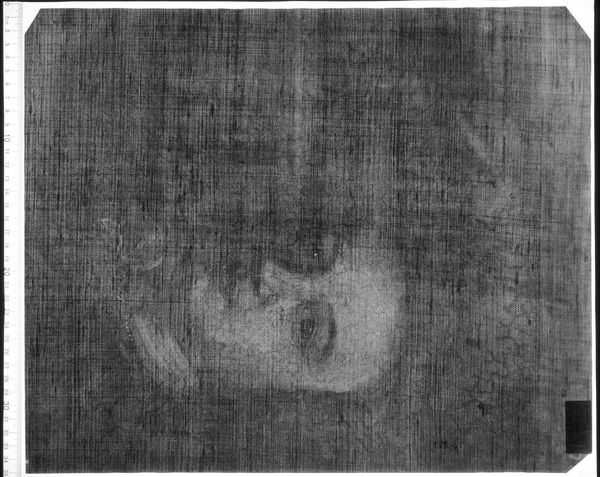
drawing, charcoal
#
portrait
#
drawing
#
charcoal drawing
#
figuration
#
symbolism
#
portrait drawing
#
charcoal
#
charcoal
#
monochrome
Copyright: Public domain
Editor: This is Eugène Carrière's 1900 charcoal drawing, "Albert Samain Post Mortem." The monochromatic haziness gives it such an ethereal, almost dreamlike quality. What’s your interpretation of it? Curator: It’s incredibly moving, isn’t it? Beyond its aesthetic qualities, let’s think about what it means to create a posthumous portrait. What narratives are being constructed? Consider Carrière’s social circle; the Symbolist poets, writers, intellectuals. What purpose did art serve in their community in coping with loss, in preserving memory, particularly during a period rife with social and political upheaval? Editor: So, it's less about individual grief, perhaps, and more about collective remembrance and meaning-making? Curator: Exactly. How does this image challenge or reinforce prevailing social norms around death and mourning in early 20th-century France? Think about the role of spiritualism, the burgeoning interest in the occult, and the ways in which art became a vehicle for exploring these liminal spaces. It encourages us to consider whose stories are told and how societal values shape the narrative. Editor: That definitely shifts my perspective. I was caught up in the emotion of it, but seeing it as part of a larger social and intellectual landscape gives it so much more depth. Curator: Art doesn’t exist in a vacuum. Exploring those connections to wider social currents is essential for understanding its significance and impact. Editor: This makes me think differently about memorializing people, who gets remembered, and why. Thank you! Curator: Indeed. Let us use the past to critically examine the present.
Comments
No comments
Be the first to comment and join the conversation on the ultimate creative platform.
